Difference Between Blood Groups A, B, AB, and O
Blood group type A is when A antigens are on the red blood cells and anti-B antibodies are in the plasma. Type B blood is when B antigens occur on the surface of red blood cells while anti-A antibodies occur in the plasma. AB blood group is when no anti-A nor anti-B antibodies occur in the plasma and both A and B antigens occur on the cell. Blood group O is when no antigens occur on the cell but both anti-A and anti-B antibodies are found in the plasma.
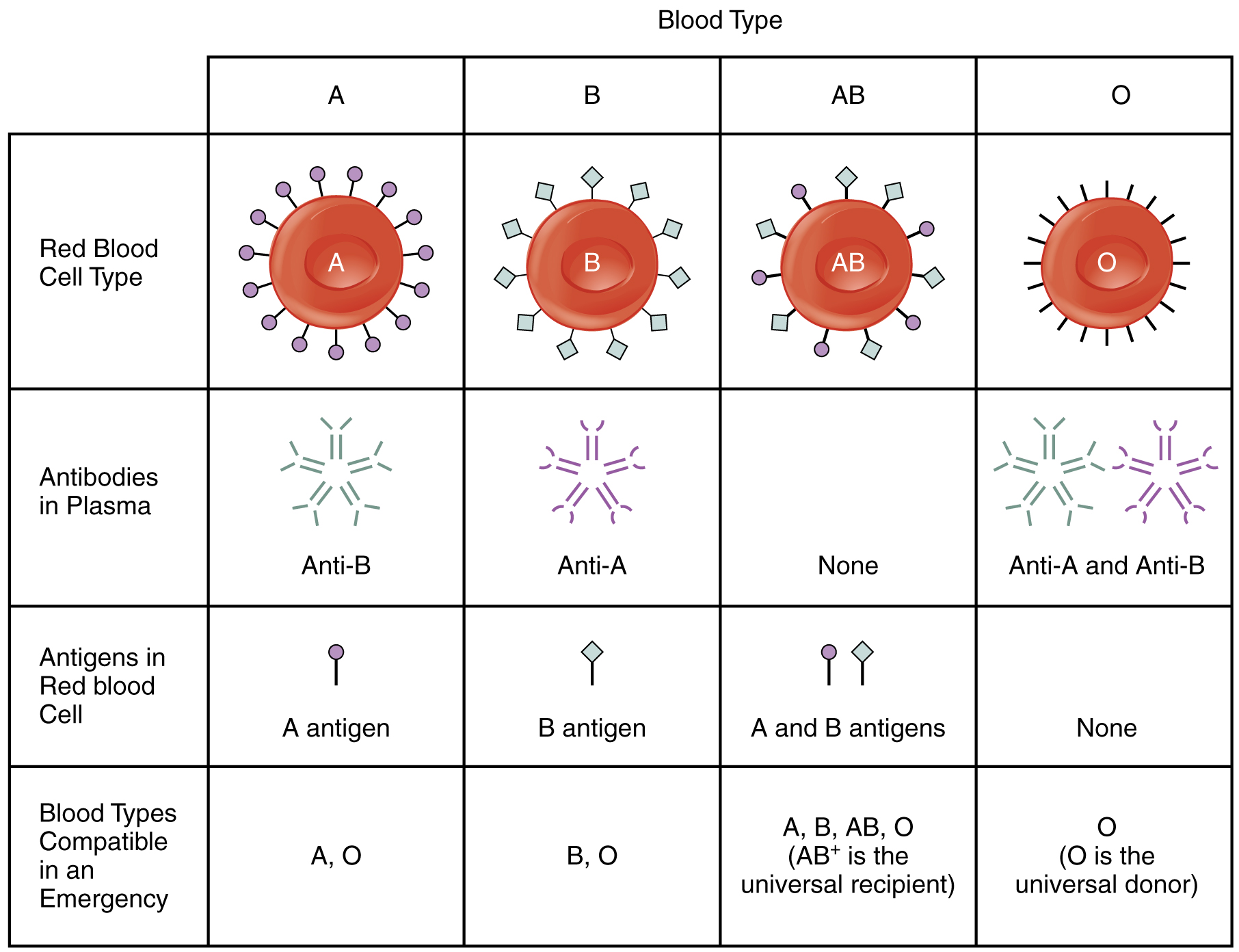
What is Blood Group A?
Definition:
Blood group A is the type of blood where the erythrocytes (red blood cells) have an A antigen on the outer surface of the cells. An antigen is a specific protein found on cells. The plasma of group A contains anti-B antibodies.
Genotype:
People with type A blood have one of two possible genotypes, either AO or AA. In the ABO blood groups, A is an allele that is codominant with B, meaning if both are present, both are expressed. The type O allele is always recessive, meaning that a person with an A and O allele will always have type A blood.
Donor/Receiver:
People with type A blood can donate blood to individuals who have blood type A or type AB, and they can receive blood from individuals with type A or type O. If a person receives blood from the other types, a severe life-threatening reaction can occur. This is because antigens and antibodies stick together, which then makes the blood cells stick together. Thus, a person with type A blood cannot be given blood from somebody with type B because the anti-B antibodies would stick to the B type blood cells from the donor.
Prevalence:
Blood group A is found in approximately 30% of people. It is most common in certain populations, such as Australian aborigines and people in northern Scandinavia.
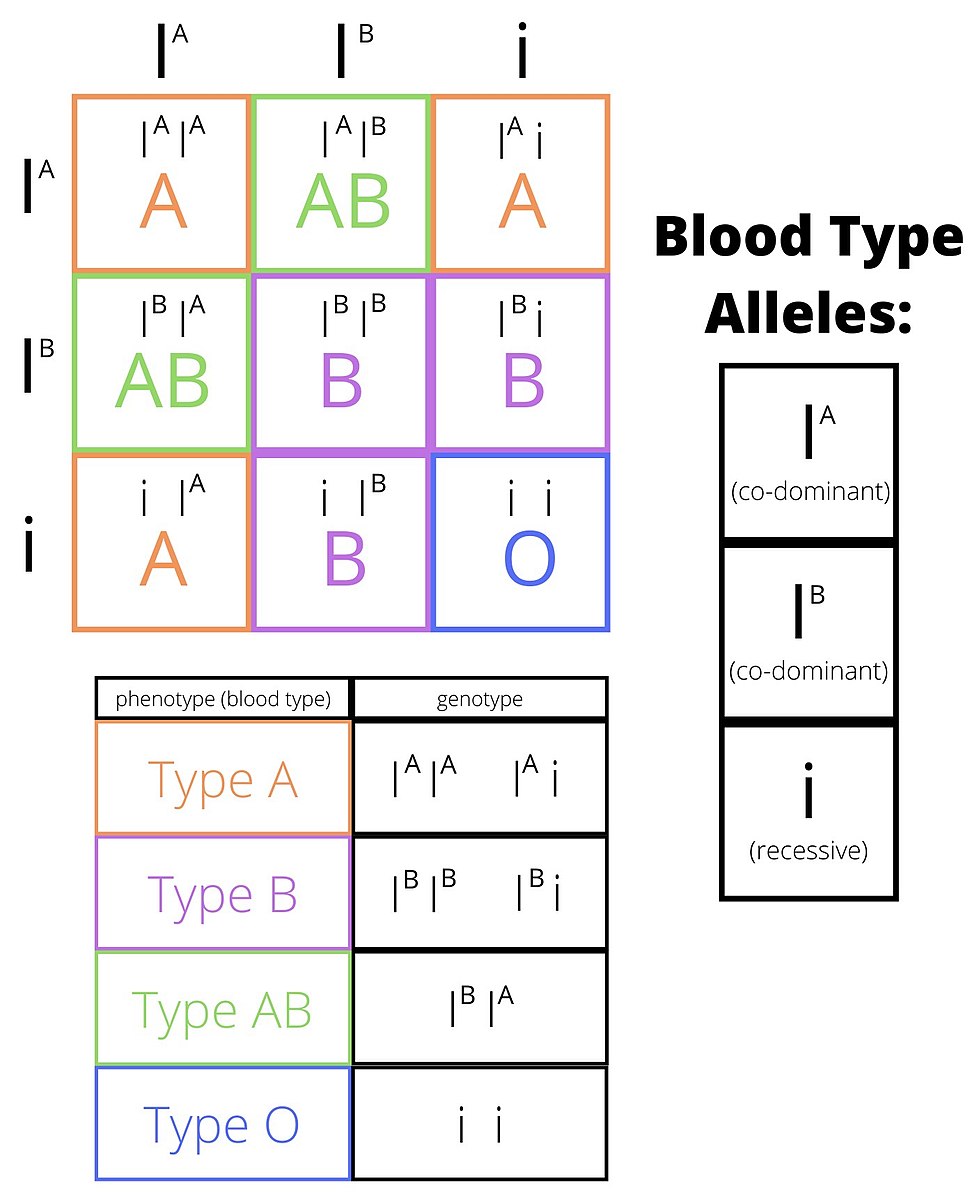
What is Blood Group B?
Definition:
Blood group B is the type of blood where the red blood cells have a B antigen on the outer surface of the cells, and the plasma contains anti-A antibodies.
Genotypes:
Type B genotypes are either BB or BO. Once again, in the heterozygous condition, O is not expressed since it is a recessive allele. This means that a person with genotype BO has type B blood, but this also means that the O allele can be passed on to offspring.
Donor/Receiver:
People with type B blood can donate their blood to any individuals who have either blood type B or AB, and they can receive blood from individuals with type B or O.
Prevalence:
Blood type B is found in 10% of people. This type of blood is most common in central regions of Asia and some countries in Africa.
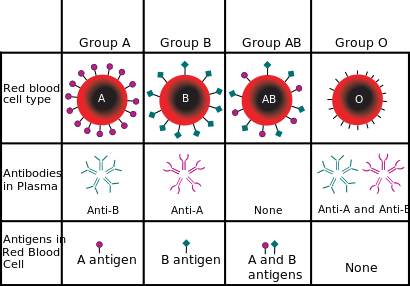
What is Blood Group AB?
Definition:
Blood group AB is when a person’s blood has A and B antigens on the cells, and the plasma contains neither anti-A nor anti-B antibodies.
Genotype:
The only genotype a person can have with type AB blood is AB. This is due to the non-mendelian genetics that are involved. This is a case of codominance where both alleles, A and B, are expressed.
Donor/Receiver:
Individuals with type AB blood can give blood to AB individuals and can receive blood from all the ABO blood groups. The lack of antibodies in type AB means there is not a worry about an agglutination reaction, since this occurs when antibodies for a particular antigen, are present in the blood.
Prevalence:
AB blood type is quite rare with less than 10% of people having this type. In America, only about 4% of the population have AB positive blood, and even less people, 1% have AB negative blood.
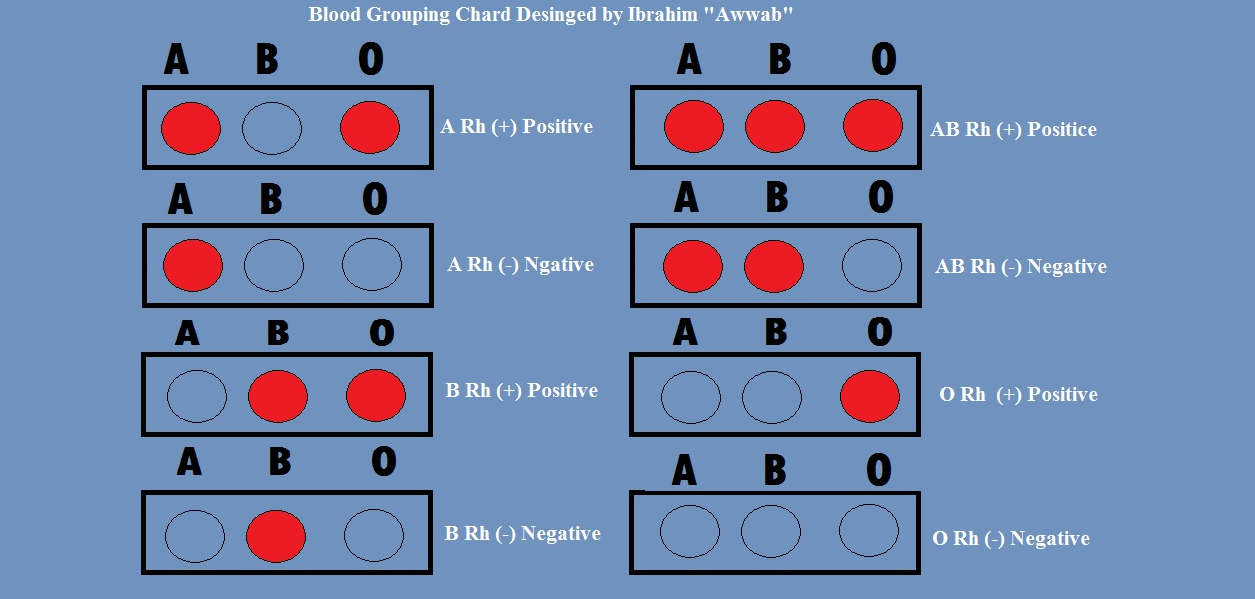
What is Blood Group O?
Definition:
Blood group O is when a person has neither antigen A nor B on the surface of the red blood cells and has both anti-B and anti-A antibodies.
Genotype:
People with type O blood are homozygous recessive, meaning they inherited the O allele from both parents. They can have only one genotype, OO.
Donor/Receiver:
While people with type O blood can donate blood to all four blood groups in the ABO system, they can only receive blood from people who have type O blood. This is because they have both the anti-A and anti-B antibodies, which would trigger a transfusion reaction.
Prevalence:
This is the most common blood group, with about 38% of people having type O blood. The occurrence of type O is even higher in places where malaria occurs, suggesting that the blood group offers an advantage against the malaria parasite.
Difference Between Blood Groups?
Definition
Type A blood has A antigens and anti-B antibodies. Type B blood has B antigens and anti-B antibodies. AB blood has AB antigens, and no antibodies and type O blood has no antigens but both anti-A and anti-B antibodies.
Genotype
The genotype of type A blood is AO or AA. The genotype of type B blood is BO or BB and that of type AB blood, AB. Type O blood genotype is OO.
Can receive blood from
People with type A blood can receive blood from those with type A or O. Those people with type B blood can receive from type B and O. Individuals with AB blood can receive from all four blood groups. People who have type O blood can only receive blood from those with type O.
Can donate blood to
Individuals with type A blood can donate to those who have A or AB, while people with type B blood can donate to people with B or AB. People who have type AB blood can donate to those who have AB. People with type O can donate blood to all blood groups.
Table comparing Blood groups
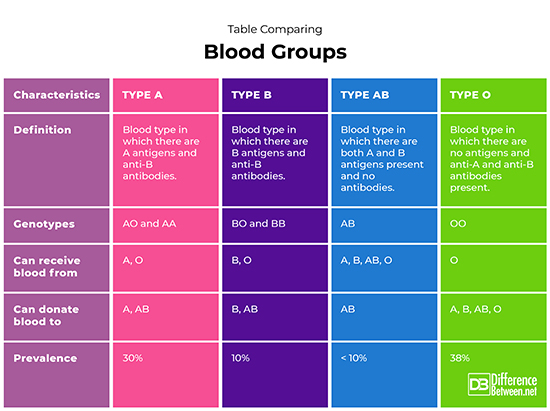
Summary of Blood Groups
- There are four main blood groups in the ABO system: A, B, AB and O.
- Transfusions depend on matching blood types and can result in bad reactions where antibodies stick to antigens.
- Certain blood groups such as O and A are more common than B and AB.
- Difference Between Rumination and Regurgitation - June 13, 2024
- Difference Between Pyelectasis and Hydronephrosis - June 4, 2024
- Difference Between Cellulitis and Erysipelas - June 1, 2024
Search DifferenceBetween.net :
Leave a Response
References :
[0]Cserti, Christine M., and Walter H. Dzik. "The ABO blood group system and Plasmodium falciparum malaria." Blood 110.7 (2007): 2250-2258.
[1]Sarode, Ravindra. “ Blood Collection.” Merckmanuals. Merck & Co., 2020, https://www.merckmanuals.com/professional/hematology-and-oncology/transfusion-medicine/blood-collection?query=abo%20blood%20groups
[2]The Editors of Encyclopedia Britannica. “ABO blood group system.” Biology. Encyclopedia Britannica, 2012, https://www.britannica.com/science/ABO-blood-group-system#ref168140
[3]Image credit: https://www.google.com.ph/imgres?imgurl=https%3A%2F%2Fupload.wikimedia.org%2Fwikipedia%2Fcommons%2F1%2F1d%2F1913_ABO_Blood_Groups.jpg&imgrefurl=https%3A%2F%2Fcommons.wikimedia.org%2Fwiki%2FFile%3A1913_ABO_Blood_Groups.jpg&tbnid=DfSmL3syh31WlM&vet=12ahUKEwicsrOpgJnwAhWYEKYKHQgjB1MQMygAegQIARBB..i&docid=vqrMPZRyoRRG8M&w=1812&h=1392&q=Blood%20Group%20A&hl=en&ved=2ahUKEwicsrOpgJnwAhWYEKYKHQgjB1MQMygAegQIARBB
[4]Image credit: https://commons.wikimedia.org/wiki/File:Blood_types.png
[5]Image credit: https://commons.wikimedia.org/wiki/File:ABO_Blood_Group_Phenotypes.jpg
[6]Image credit: https://commons.wikimedia.org/wiki/File:Blood_Group_Chart_Designed_by_((Sir_Ibrahim_Awwab))_29_July_2018.png
